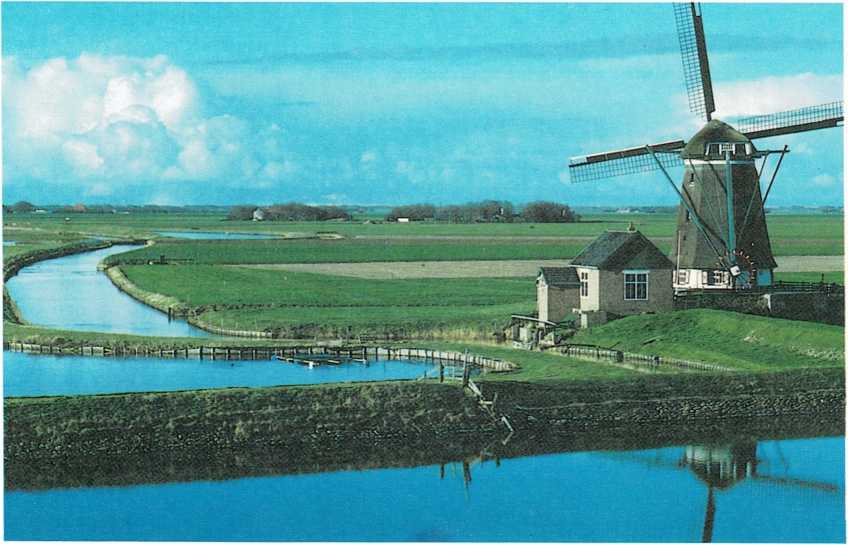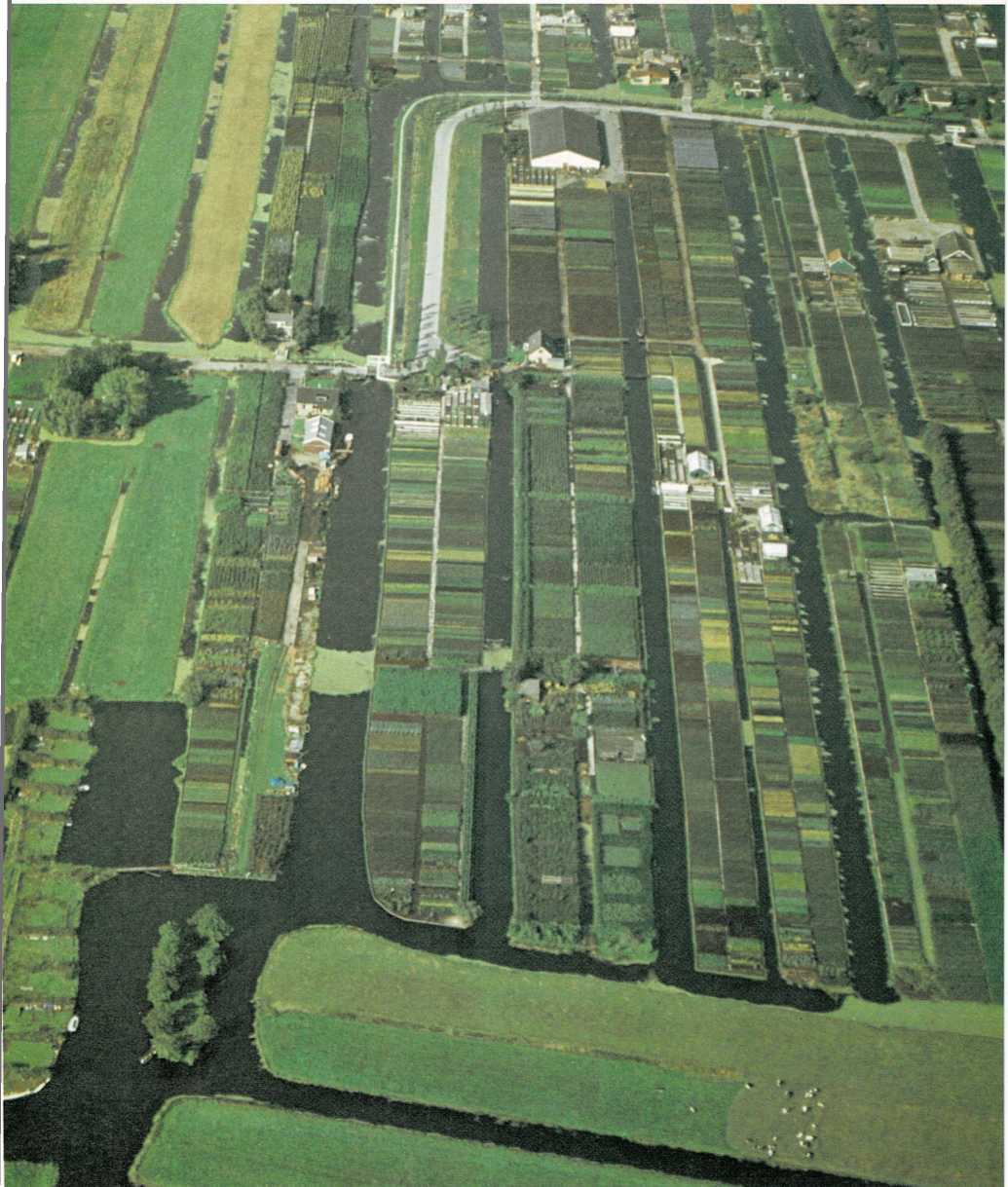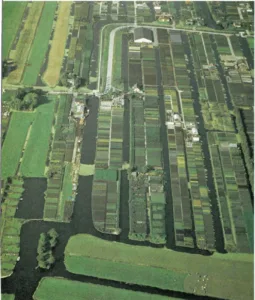SAVING THE DROWNING LAND
Did you ever hear the tale about the little Dutch boy who saved his
land? His name was Peter and he lived in a small village in the
Netherlands, or Holland.
One evening, Peter saw water leaking through a hole in a dike. He knew
that even the smallest leak in a dike could grow into a flood overnight.
There was no one around he could warn, so he plugged the hole with his
finger to hold back the water. The next morning, the townspeople found
Peter and declared him a hero.
Although the story of Peter is not true, it shows how important dikes
are in Holland. Dikes protect polders—land from which the water has
been drained. First, a dike is built around the land to be drained. Then
the water is pumped out into canals. At one time, windmills were used to
run the pumps, but now electric motors do this. People then build
houses, grow plants, and raise cows on the drained land, or polder. If
it weren’t for dikes, much of Holland would be under water.
At one time, windmills were used to pump water from the land and into
canals.


Polders, or drained land, spread across the countryside like a
patchwork quilt.

